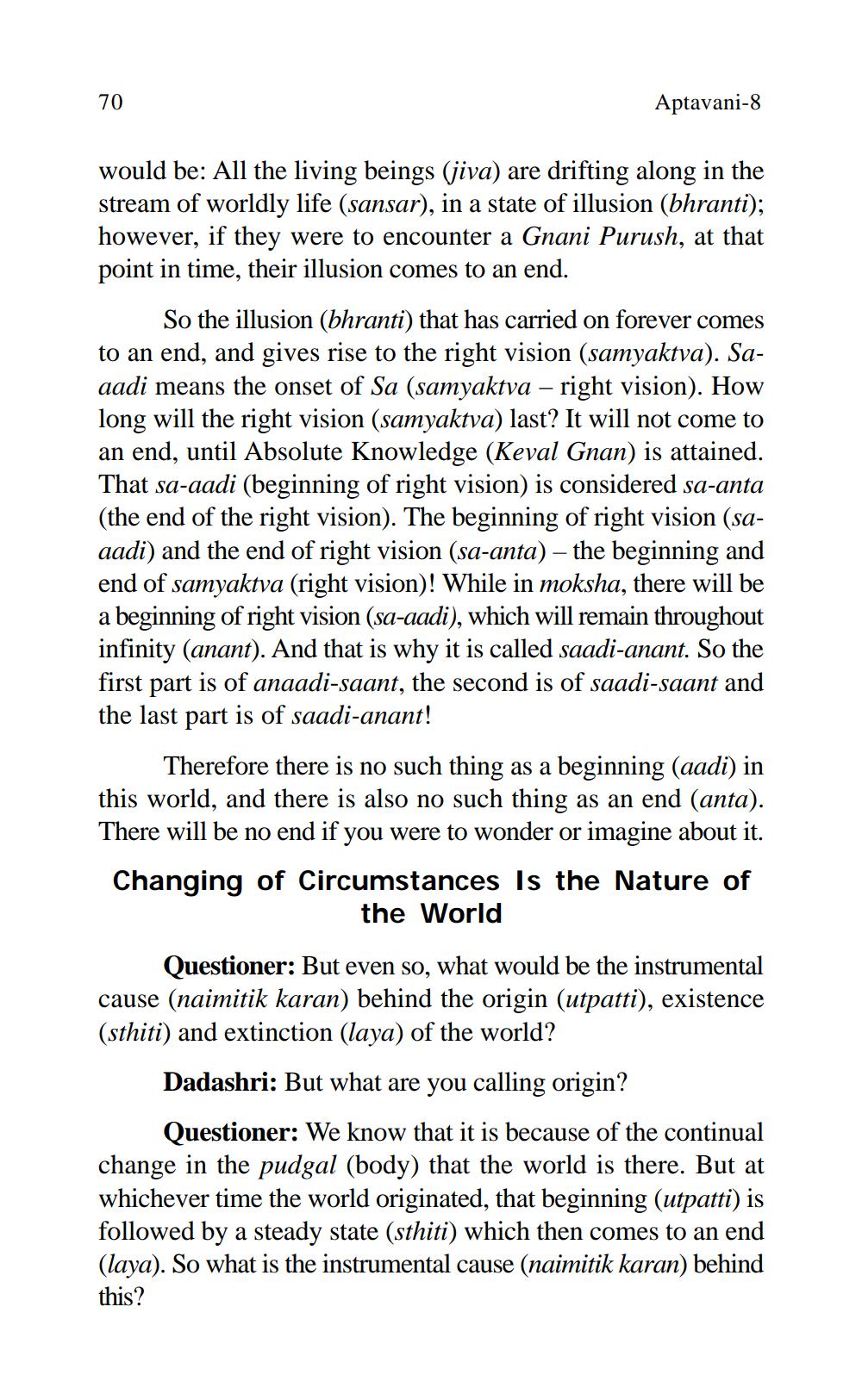________________
70
Aptavani-8
would be: All the living beings (jiva) are drifting along in the stream of worldly life (sansar), in a state of illusion (bhranti); however, if they were to encounter a Gnani Purush, at that point in time, their illusion comes to an end.
So the illusion (bhranti) that has carried on forever comes to an end, and gives rise to the right vision (samyaktva). Saaadi means the onset of Sa (samyaktva – right vision). How long will the right vision (samyaktva) last? It will not come to an end, until Absolute Knowledge (Keval Gnan) is attained. That sa-aadi (beginning of right vision) is considered sa-anta (the end of the right vision). The beginning of right vision (saaadi) and the end of right vision (sa-anta) – the beginning and end of samyaktva (right vision)! While in moksha, there will be a beginning of right vision (sa-aadi), which will remain throughout infinity (anant). And that is why it is called saadi-anant. So the first part is of anaadi-saant, the second is of saadi-saant and the last part is of saadi-anant!
Therefore there is no such thing as a beginning (aadi) in this world, and there is also no such thing as an end (anta). There will be no end if you were to wonder or imagine about it. Changing of Circumstances Is the Nature of
the World
Questioner: But even so, what would be the instrumental cause (naimitik karan) behind the origin (utpatti), existence (sthiti) and extinction (laya) of the world?
Dadashri: But what are you calling origin?
Questioner: We know that it is because of the continual change in the pudgal (body) that the world is there. But at whichever time the world originated, that beginning (utpatti) is followed by a steady state (sthiti) which then comes to an end (laya). So what is the instrumental cause (naimitik karan) behind this?




